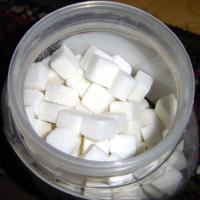US Goverments New Low Carb Ruling
The US government issued their ruling on the caloric and carbohydrate verbiage that can be used in the labeling and advertising of wine and other spirits. As stated in the ruling, "Truthful and specific statements about calorie and carbohydrate content in the labeling and advertising of wine, distilled spirits, and malt beverages are authorized".
What This Authorization Means
In short, it means that wine producers will have new marketing opportunities to pursue. Many wine manufacturers are beginning to market their low-carbohydrate products as healthy and fitting perfectly into a low carb diet.
As example, Brown-Forman recently jumped on the low-carb bandwagon with two new and innovative products: One.6 Chardonnay and One.9 Merlot. They are branding and communicating the names One.6 and One.9 to highlight the respective carb count of the wines. One.9 Merlot has 1.9 carbs and One.6 Chardonnay has 1.6 carbs per five-ounce glass.
What Caused It?
A handful of companies had already started making low carbohydrate claims in advertisements and labels. The Alcohol and Tobacco Tax and Trade Bureau was concerned about possible advertising misrepresentation and implying that the consumption of "low-carbohydrate" wines or spirits may play a healthy role in a weight maintenance or weight reduction plan.
The government's bureau is in the process of taking a comprehensive review of all aspects of wine and labeling and advertising. One of the rulemaking determinations will be on the possible mandatory or voluntary use of nutritional information on wine labels. However, rather than waiting the completion of the more comprehensive review, the bureau moved forward with Ruling 2004-1.
Low-Carb Rules
The government's low-carb criteria from the ruling states the wine must have lower than 7 grams in a 5oz serving. Most Champagnes and dry wines will easily make that classification. In the situation where wines come with slightly higher carbohydrate content (more than 7 grams), the government approved the use of the terms "reduced carbohydrate" and "lower carbohydrate" (as well as similar terms). These can be used on labels or advertising as long as the term is used as part of a statement that specifies the number of carbohydrates per serving size, and compares that number with the number of carbohydrates in another specified product made by that producer.
-
Understanding The CARB Refrigerant Gas Management Regulations (2010 early actions)
The following explains the refrigerant gas management progr
-
Tips on how to Develop Muscle And Lose Fat At the same time
Are you able to create muscle and shed fat simultaneously?
-
Lets Take A Look At The Leading Diet Programs That Are The Most Effective
In order to lose a couple pounds, there are selection of diet plans
-
South Beach Diet Menus
When you want to get the most variety from your South B
-
Low Carb and Lowfat Diets...A Scam?!
Low Carb and Low Fat Diets - A Scam?!If anyone knows anythi
-
Diet pills may suppress appetite, but low-carb nutrition and whole food supplements work far better
Refined carbohydrates and processed food do more to spike a
- DON'T MISS
- Why Is South Beach The Darling Of All Low Carb Diets?
- Sugar Free Cake
- How To Eat Low Carb
- A Natural Craving for Sugar
- Keto Low Carb Foods
- Low Carb Diet - Eat More, Not Less
- Buy Walden Farms Ketchup Low Carb
- Combining A Low Fat Low Carb Diet For Quick Weight Loss
- Satisfying Your Hunger In Simple Ways
- Have Your Chocolate And Eat It Too!




